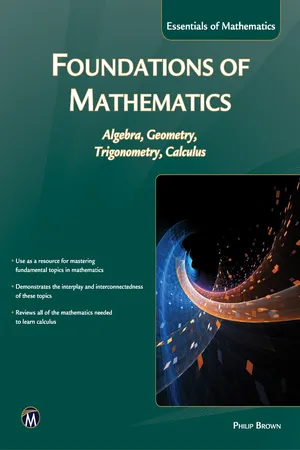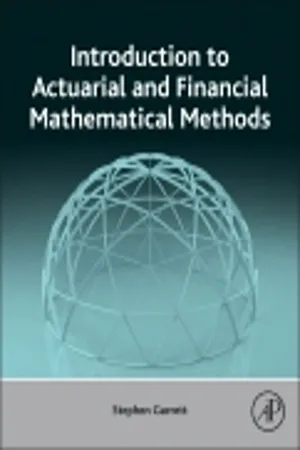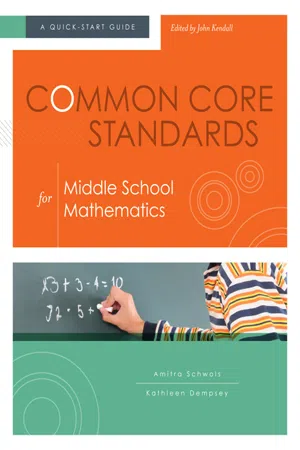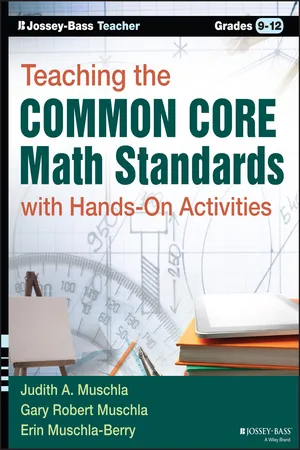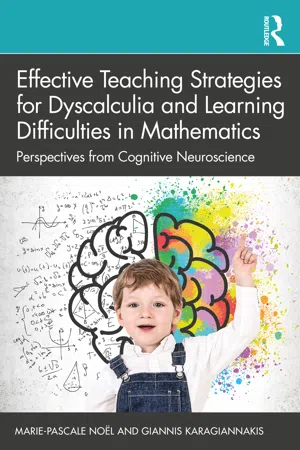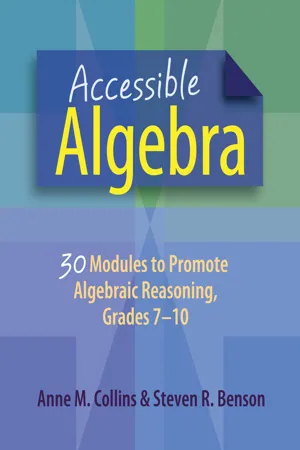Mathematics
Rational Expressions
Rational expressions are mathematical expressions that can be written as a ratio of two polynomials. They can include variables and have the form P(x)/Q(x), where P(x) and Q(x) are polynomials and Q(x) is not equal to zero. Rational expressions can be simplified, added, subtracted, multiplied, and divided using techniques similar to those for rational numbers.
Written by Perlego with AI-assistance
Related key terms
6 Key excerpts on "Rational Expressions"
- eBook - ePub
Foundations of Mathematics
Algebra, Geometry, Trigonometry and Calculus
- Philip Brown(Author)
- 2016(Publication Date)
- Mercury Learning and Information(Publisher)
y) are polynomials in two variables, and so on. Note that we can regard any polynomial as a rational expression with a unit in its denominator.In this section, we will only work with Rational Expressions in one variable. We will also suppose that the polynomials have real coefficients and so can, in principle, be factored into a product of linear and irreducible quadratic factors. Students will recall that a rational expression is in simplified form if p(x) and q(x) have no common factors.We have explained the procedure for simplifying Rational Expressions in section 5.6 . We will use this technique in some of the examples below.6.2.1Multiplying and Dividing Rational Expressions
Multiplying Rational Expressions is as simple as multiplying ordinary fractions; that is, numerators and denominators are multiplied together. The resulting fraction can be simplified by canceling common factors in the numerator and denominator.EXAMPLE 6.2.1. Write the following product of Rational Expressions as a single rational expression in simplified form:Answer: If the denominators in the first and third Rational Expressions are factorized, then the product of the numerators divided by the product of the denominators isDivision by a rational expression, as with ordinary fractions, is a case of multiplying by the reciprocal of the rational expression.EXAMPLE - Stephen Garrett(Author)
- 2015(Publication Date)
- Academic Press(Publisher)
.b.For all p and q in the set of negative real numbers, the product of p and q is in the set of positive real numbers. For example,− 10.6 , − 5.3 ∈, andR −56.18 ∈.R +c.There exists z in the set of integers such that z is less then 7 and is odd. For example, z = 5.d.For all p in the set of rational numbers, there exists q in the set of rational numbers such that 3p = q . For example, p = 4/3 and q = 4.1.3 Algebraic expressions
As we shall see throughout this book, mathematical methods require the manipulation of mathematical expressions. At this stage, it is important to define what we mean by the distinct types of mathematical expressions: equations , identities , inequalities , and functions . The distinction between these terms is the topic of this section, and functions will be considered in detail in Chapter 2 .1.3.1 Equations and identities
The key distinction between an equation and an identity is the number of values of the independent variable (x in Eqs. 1.2 and 1.3 ) for which the expression is true. An identity is true for all values of the independent variable, but this is not true of an equation.Put another way, for an identity, it is possible to show that the expression on the left-hand side (LHS) of the equal sign is algebraically equal to that on the right-hand side (RHS). This is not true of an equation and one might be required to find the particular values of the independent variable for which the equality between the LHS and RHS holds. In general, an equation could have a finite or infinite number of values of the independent variable for which the equality holds; typically we might refer to these values of the independent variable as the solutions of the equation.Consider the following expression:= x + 10( x + 4 )2(1.2)It should be immediately clear that Eq. (1.2 ) is not an identity. In particular, we might note that the LHS is a quadratic expression, that is the highest power of x is 2, and the RHS is linear, that is the highest power of x is 1. For this reason the behavior of the LHS and the RHS will be very different as x takes different values. We return to a discussion of polynomials in Chapter 2- eBook - ePub
Common Core Standards for Middle School Mathematics
A Quick-Start Guide
- Amitra Schwols, Kathleen Dempsey, John Kendall, John Kendall(Authors)
- 2013(Publication Date)
- ASCD(Publisher)
Chapter 4Expressions and Equations
. . . . . . . . . . . . . . . . . . . .The introduction to the Common Core standards' high school Algebra domain provides some useful definitions to help differentiate the two mathematical terms expression and equation:An expression is a record of a computation with numbers, symbols that represent numbers, arithmetic operations, exponentiation, and, at more advanced levels, the operation of evaluating a function…. An equation is a statement of equality between two expressions, often viewed as a question asking for which values of the variables the expressions on either side are in fact equal. These values are the solutions to the equation. (CCSSI, 2010c, p. 62)The middle school Expressions and Equations (EE) domain provides a critical bridge between content in the Operations and Algebraic Thinking domain in earlier grades and algebraic content students will encounter in high school. Figure 4.1 shows an overview of the Expressions and Equations domain's clusters and standards by grade level. - Gary R. Muschla(Author)
- 2015(Publication Date)
- Jossey-Bass(Publisher)
Section 2Standards and Activities for Algebra
Seeing Structure in Expressions
An expression is a general term used to designate a symbolic mathematical form. An algebraic expression is an expression that contains a variable or a sum, difference, product, or quotient that contains one or more variables.A-SSE.1
“Interpret the structure of expressions.”
- 1. “Interpret expressions that represent a quantity in terms of its context.
- a. “Interpret parts of an expression, such as terms, factors, and coefficients.
- b. “Interpret complicated expressions by viewing one or more of their parts as a single entity.”
Activity: Interpreting Expressions
Working in pairs or groups of three, students will play a game in which they identify terms, factors, and coefficients of an expression. They will receive 1 point for each correct answer.Materials
Scissors; one copy of reproducible A-SSE.1, “The Expressions Game,” for each pair or group of students.Procedure
- Explain that an expression is a general, symbolic mathematical form that combines numbers, operation signs, and sometimes variables. Review the following:
- If an expression contains variables, it is called an algebraic expression. An example is 3n.
- If an expression is written as the sum of several quantities, each quantity is a term of the expression. In 3x + 2y, 3x and 2y are terms.
- If an expression is written or can be written as the product of two or more quantities, each quantity is a factor of the expression. When 4x + 8 is written as 4(x + 2), the factors are 4 and (x + 2).
- A coefficient of a variable is the numeral to be multiplied by the variable. In 7x, 7 is the coefficient of x.
- Explain that students will play a game in which they will name the terms of expressions, factors of expressions, and coefficients of variables. They will receive 1 point for each correct answer and no points for any incorrect answers. The students in each pair or group will play against each other.
- eBook - ePub
Effective Teaching Strategies for Dyscalculia and Learning Difficulties in Mathematics
Perspectives from Cognitive Neuroscience
- Marie-Pascale Noël, Giannis Karagiannakis(Authors)
- 2022(Publication Date)
- Routledge(Publisher)
6 Rational numbers
DOI: 10.4324/b22795-6A rational number is the quotient of two integers. Rational numbers are presented in three different notations: fractions (1/4), decimal numbers (0.25), and percentages (25%). During the last years of the primary school cycle (around fourth or fifth grade), the child is introduced to rational numbers. Mastering these rational numbers is important for school success already in primary schools, but also beyond. Thus, the knowledge of fractions is essential for more advanced mathematical achievement such as algebra, but is also a predictor of the ability to participate in the labour force in the United States (Geary, Hoard, Nugent & Bailey, 2012; Siegler & Pyke, 2013). Indeed, it has been observed that poor mastery of rational numbers prevents access to many middle- and high-income jobs (McCloskey, 2007). However, this learning is a problem for many students, including those in middle school or high school, mainly because they do not understand the meaning of these rational numbers.6.1 Learning rational numbers: a challenge!
Learning rational numbers is a real challenge for children. According to a study carried out by the French Community of Belgium (1996, unpublished), major difficulties persist in this learning among students in seventh or eighth grades (around the age of 13). For example, about 1 out of 4 students is unable to find a number between 2 decimal numbers (e.g., between 72.4 and 72.5), and half of them are unable to calculate a percentage (e.g., 21% of 6,200). Similarly, among a large sample of college students in the United States, only 33% correctly identified the largest of four fractions (Stigler, Givin & Thompson, 2010). One of the main reasons for this challenge is that children are facing a real conceptual shift, and the mistakes they make reveal misconceptions about rational numbers. Indeed, in many cases, the errors can be explained by the fact that students tend to view fractions and decimals as whole numbers and to apply to them the rules previously used on natural numbers. The interference of prior knowledge when learning rational numbers seems to be one of the main sources of difficulties and has been identified in the literature as the natural number bias - eBook - ePub
Accessible Algebra
30 Modules to Promote Algebraic Reasoning, Grades 7-10
- Anne Collins, Steven Benson(Authors)
- 2023(Publication Date)
- Routledge(Publisher)
Many students better understand the factor lattices after they have built them using play dough or modeling clay (or gumdrops if candy is allowed in class) as the vertices and toothpicks as the operators. As the students build their models, they are able to trace the pathways from one factor to another and to physically see where the pathways intersect. When moves are made up and to the right, the point of intersection is the LCM; when the moves are made down and to the left, the point of intersection is the GCF. Students should also be encouraged to draw the factor lattice as a reference when working with Rational Expressions.Additional Reading/Resources
- Bezuszkas, Stanley J., and Margaret Kenney. 2001. Number Treasury 2: A Collection of Facts & Conjectures, Problems & Investigations, About More Than One Hundred Kinds of Numbers (Grades 7 & Up) . Palo Alto, CA: Dale Seymour Publications.
Passage contains an image
6. Area Expressions
DOI: 10.4324/9781032680521-8DOMAIN: Expressions and EquationsSTANDARDS: 6.EE.7. Solve real-world and mathematical problems by writing and solving equations of the form x + p = q and px = q for cases in which p, q and x are all nonnegative rational numbers.7.EE.2. Understand that rewriting an expression in different forms in a problem context can shed light on the problem and how the quantities in it are related.Potential Challenges and Misconceptions
Area and perimeter present challenges for students from their first introduction in the elementary years. Many students do not understand that a rectangle has two dimensions: length and width. In the middle school years, writing expressions for the area of a figure whose dimensions include a variable that relates width to length causes great difficulty for many students. This difficulty arises due to having only previous experiences that relate area to the algorithm A = l × w. Students are usually successful when the dimensions are given and all that is required is to “plug and chug” numbers. However, oftentimes one dimension and the area or perimeter are given and students are required to calculate the missing value—for instance, the length is 9 inches and the area is 36 square inches, find the perimeter
Learn about this page
Index pages curate the most relevant extracts from our library of academic textbooks. They’ve been created using an in-house natural language model (NLM), each adding context and meaning to key research topics.
